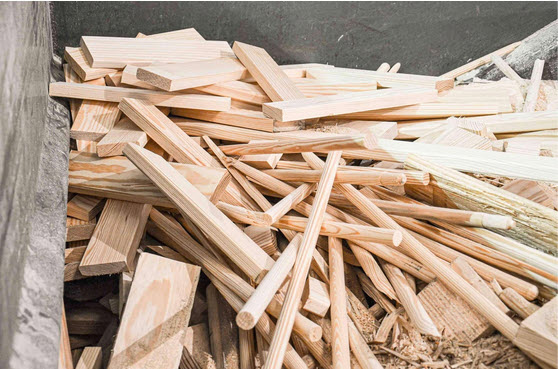Top 9 Benefits of Using Woodwork CNC Cutting Machines
The use of CNC machines in woodworking has brought about a wave of efficiency since around the 1970s. This is more true with the advent of easy-to-use cabinet design software. However, the use of CNC cutting machines is still commonly associated with cutting or punching metals. To address this myth, here are a few notable advantages of using woodwork CNC cutting machines:
1. Decreased Time Consumption
The greatest advantage offered by benchtop CNC mills in almost all applications is their ability to save time. CNC machines require computer programming, which automates the cutting and carving process. By eliminating any form of human intervention, woodworking workshops can reduce human-induced downtime. As such, it enhances your manufacturing capacity by making the operations more time-efficient.
2. Near-Perfect Repeatability

Since CNC machines run on design software that needs to be configured just once, the same program can deliver consistent and reliable results after each iteration. As such, you can have hundreds to thousands of pieces that are identical to each other.
Another aspect worthy of mentioning here is that CNC machines bypass manual or human intervention, which could potentially introduce errors in the output. Hence, this characteristic of near-perfect repeatability can be instrumental in maintaining quality assurance.
3. Greater Cutting Accuracy
In continuation with the above point, another major advantage of the CNC machine lies in its accuracy. While a high degree of repeatability ensures that all products are the same, the machine-based operation also reduces the chances of human error. CNC machines often come equipped with calibrated dials and precision tools that ensure accurate machine-controlled operations.
4. Addressing Design Complexities
Machine-driven operations would naturally be far more superior than manual cutting. As a result, woodworking CNC cutting machines would be more adept at handling design intricacies. And as discussed earlier, they can reliably reproduce these design complexities regardless of whether you produce one part or many.
Plus, all the programs get stored in an in-built cabinet design software library, which can act as a data repository for creating other designs. As such, you will not have to create programs from scratch every single time and can only make minor tweaks to an existing code for similar designs. If you’re searching for the best software to streamline your CNC woodworking workflow, Sketchlist is the Go-To Tool for CNC Cabinet Making Software.
5. Larger Cutting Field
While cutting larger feeds, working with CNC cutting machines can be a blessing. Due to its larger cutting field, CNC machines can comfortably produce larger pieces like stair raisers or large doors, for example. In addition to easily creating larger pieces, CNC machines can do it efficiently, accurately, and in the least amount of time – the perfect combination for mass production!
6. Reduced Waste
Waste can affect your organization in two main ways. The first is the obvious fact that waste would have cost implications where the output does not justify the feed that you need to input. The second drawback of waste, which is often overlooked, rests in the amount of space that it takes up on the work floor. As a result, it reduces the overall efficiency of your unit and its production capacity.

With woodworking CNC cutting machines, the logical arrangement of the steps involved in cutting available in the form of workflows introduces efficiency. As a result, the process is more streamlined to make optimum use of the feed.
7. Improved Safety
Since woodwork CNC cutting machines are computer-operated, you no longer require manpower on the work floor for constant monitoring and operation. Even CNC operators can easily function from direct vicinity, which reduces risk to life and property. Creating such a safe work environment helps with regulatory compliance, decreases instances of accidents, and reduces liabilities like worker’s compensation. At the same time, it also boosts morale as workers will feel safer and cared for.
8. Cost-Effective
CNC cutting machines prove to be cost-effective in more ways than one. After creating your drawings with cabinet design software you turn to setting up the cut. For starters, CNC machines need to be programmed only once. Thereafter, they are free to run autonomously for the entire production duration. Therefore, you would be curtailing your labor costs through this one-time task.
The efficient use of raw materials is another way through which you can improve your workshop’s bottom line. Most cabinet design software before creating the DXF files, optimize the layout of the materials. Along the same lines, reduced waste production also addresses the burden of waste disposal.
Most importantly, it can boost your production capacity by many folds, which will eventually enhance your profitability.
And while the upfront capital investment for cabinet design software and CNC cutting machines may seem like a lot, its long-term benefits can easily recover the costs.
9. Greater Production Capacity
Woodworking units that need to mass-produce items can derive immeasurable advantages from CNC cutting machines. These machines inject efficiency and reduce the time to market while also offering infinite scalability to meet peak demands. Additionally, they take up very little floor space and can produce non-stop, with routine maintenance activities being the only interruptions.
Final Thoughts
CNC machines can do more than wood cutting jobs. They can also take care of other operations, like turning, carving, etc., even across multiple axes. Using a CNC machine can add value to your business while saving time, labor cost, resources, and raw materials!

